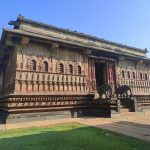Discover the allure of Guthu House at Pilikula Heritage Village in Mangalore, Karnataka, as we delve into the rich heritage of coastal Karnataka. Uncover the traditional lifestyle and architecture of the Tulu-speaking community, and immerse yourself in the customs, artifacts, and cultural legacy of this captivating region. Join us on a journey to explore the timeless charm of Guthu House and its significance in preserving the cultural heritage of coastal Karnataka.
Table of Contents
- Introduction to Pilikula Heritage Village
- The Cultural Significance of Guthu House
- Exploring the Tulu-Speaking Community’s Legacy
- Traditional Architecture: The Unique Design of Guthu House
- Artifacts and Exhibits Inside Guthu House
- Immersive Visitor Experiences at Guthu House
- Preserving the Cultural Heritage of Coastal Karnataka
- FAQs
Introduction to Pilikula Heritage Village: A Journey into Karnataka’s Cultural Heart
Nestled in the serene surroundings of Mangalore, Pilikula Heritage Village serves as a portal into the cultural richness of coastal Karnataka. Among its various attractions, Guthu House stands out as a historical monument that reflects the traditions, lifestyle, and architectural brilliance of the Tulu-speaking community. In this article, we will uncover the allure of this ancient dwelling while exploring the timeless legacy of the people who have called this region home.
The Cultural Significance of Guthu House
A Historical Treasure of Coastal Karnataka
At the heart of Pilikula Heritage Village lies Guthu House, a magnificent structure that offers a window into the traditional lifestyle of the region’s Tulu-speaking community. This cultural landmark provides a rare glimpse into the history of the region and stands as a living testament to the enduring heritage of coastal Karnataka.
The house is an integral part of the cultural preservation efforts in the village. Not only does it showcase the region’s rich customs and unique artifacts, but it also plays a key role in educating visitors about the importance of safeguarding local traditions for future generations.
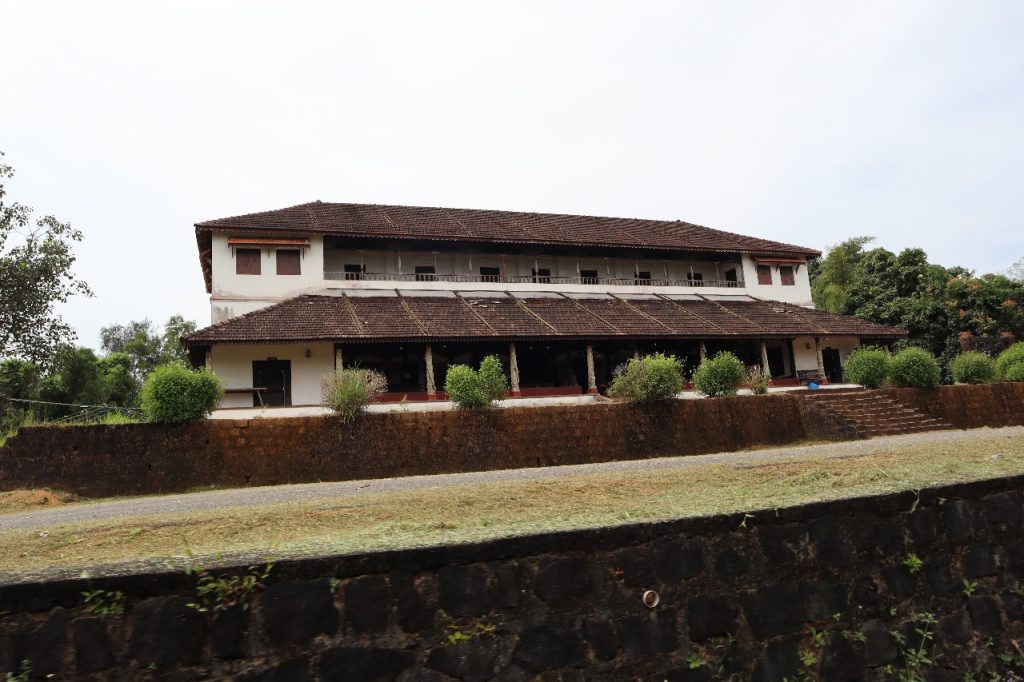
Exploring the Tulu-Speaking Community’s Legacy
People Rooted in Tradition and History
The Tulu-speaking community has inhabited coastal Karnataka for centuries, shaping its cultural landscape with their distinctive language, customs, and architecture. Tulu, one of the state’s five Dravidian languages, has its own vibrant traditions that have been carefully passed down through the generations.
The community’s long-standing connection with the region is reflected in their festivals, agricultural practices, and craftsmanship. As the custodians of coastal Karnataka’s heritage, the Tulu-speaking people have played a crucial role in preserving the area’s historical identity. Visiting Guthu House allows us to step into this legacy and appreciate the community’s contributions to regional culture.
Traditional Architecture: The Unique Design of Guthu House
An Architectural Masterpiece of Coastal Karnataka
The architectural design of Guthu House is a fascinating blend of tradition and sustainability. Its wooden structure, sloping terracotta roof, and intricate carvings reflect the craftsmanship of the Tulu-speaking community. This traditional home was built to accommodate the climate and lifestyle of coastal Karnataka, using locally sourced materials and sustainable building practices that have stood the test of time.
The layout of Guthu House is centered around a large courtyard, a key feature in Tulu architecture, symbolizing the connection between the family and nature. The spacious interiors, adorned with wooden beams and carvings, offer a glimpse into the daily life of the community while showcasing their architectural expertise.
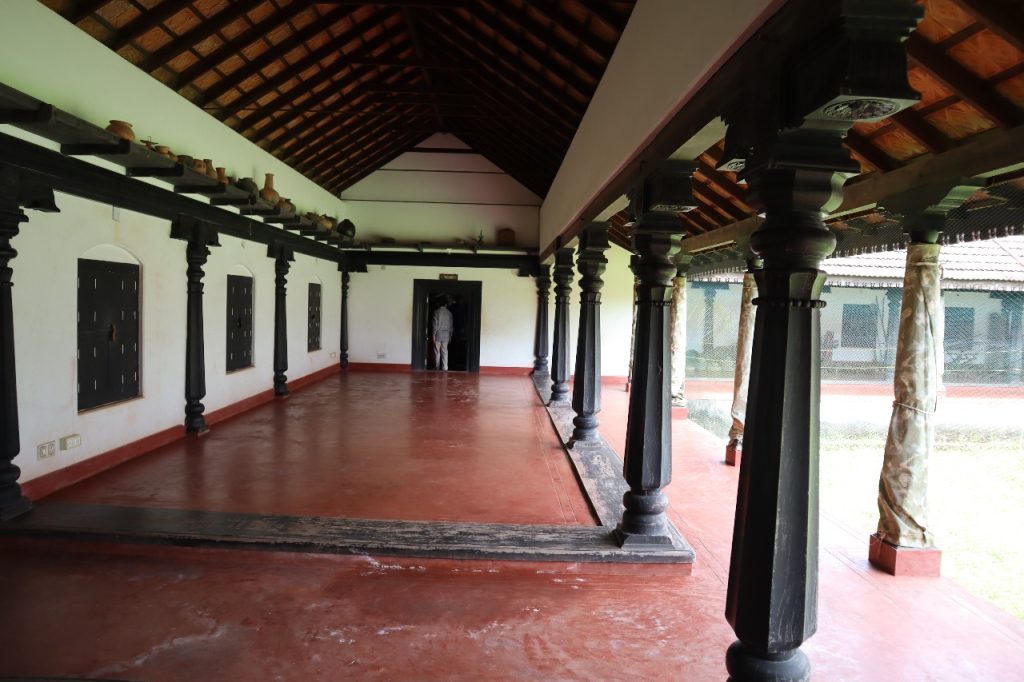
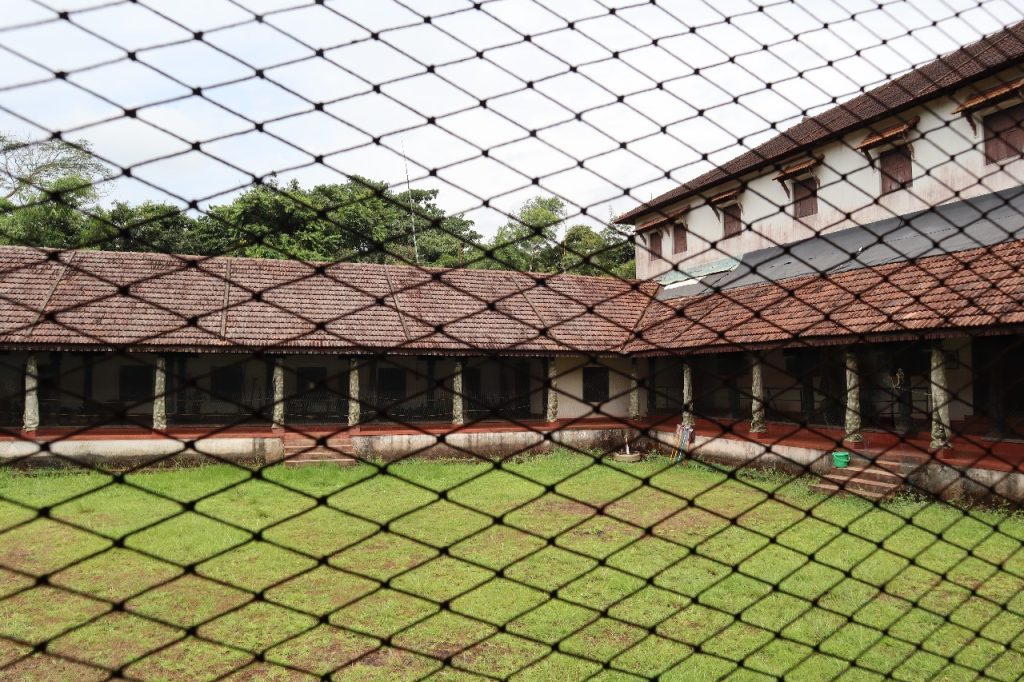
Artifacts and Exhibits Inside Guthu House
Preserving the Region’s Cultural Heritage
Guthu House is not just a beautiful structure; it also houses an impressive collection of artifacts and cultural exhibits that highlight the Tulu-speaking community’s way of life. From traditional household items to ancient relics, the house is filled with objects that tell the story of coastal Karnataka’s history.
Visitors can explore the vibrant textiles, utensils, and wooden furniture that were once part of everyday life in the region. These items are meticulously preserved, allowing visitors to gain a deeper understanding of the craftsmanship, artistry, and daily rituals of the Tulu people.
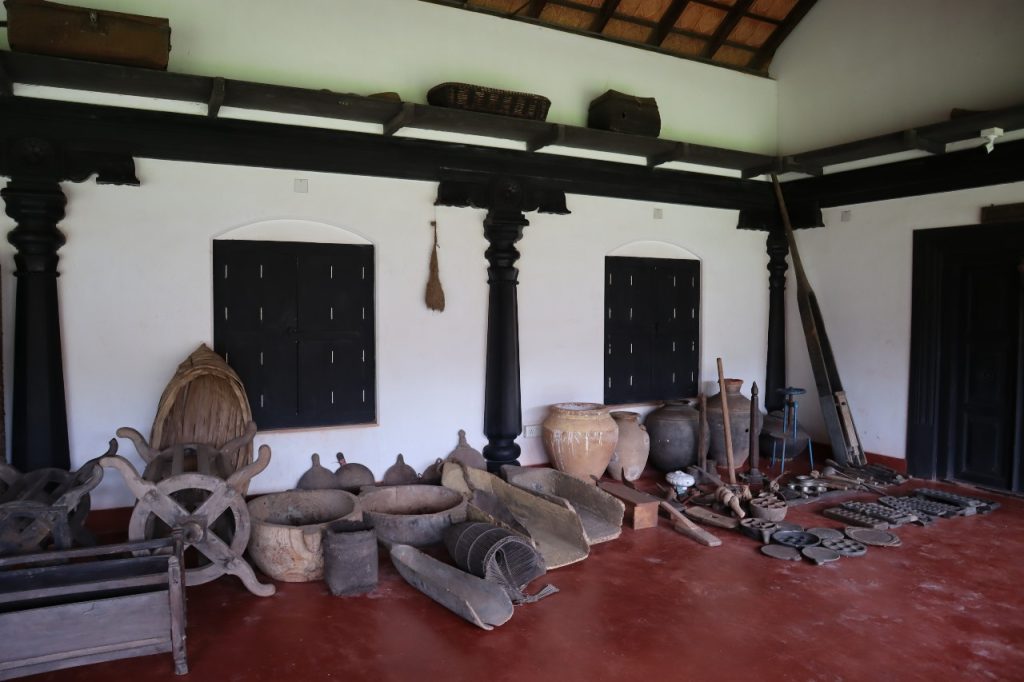
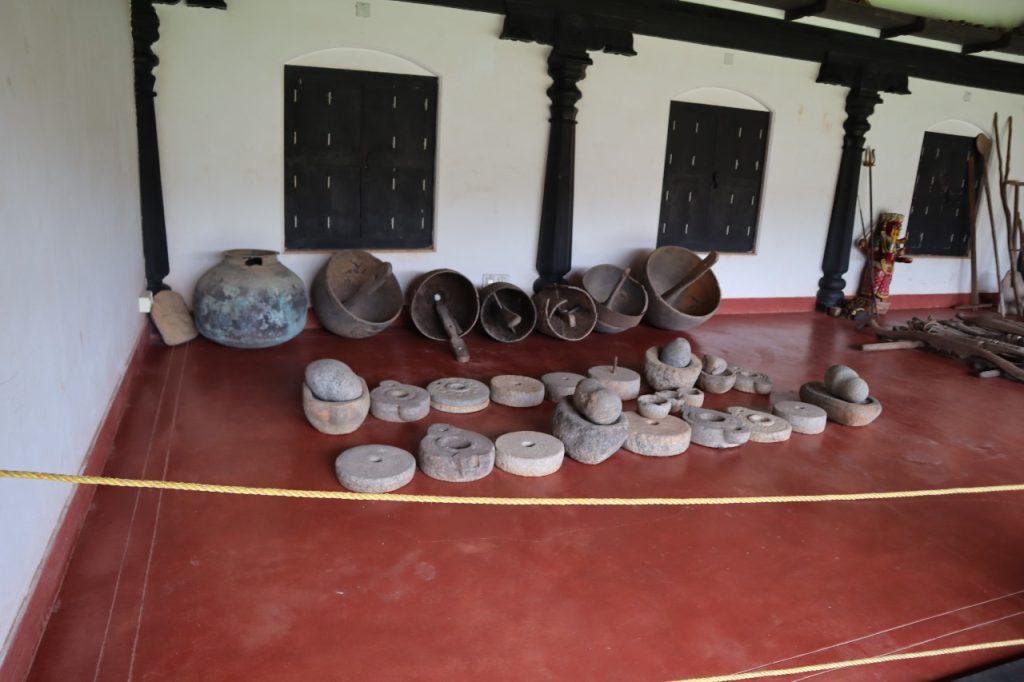
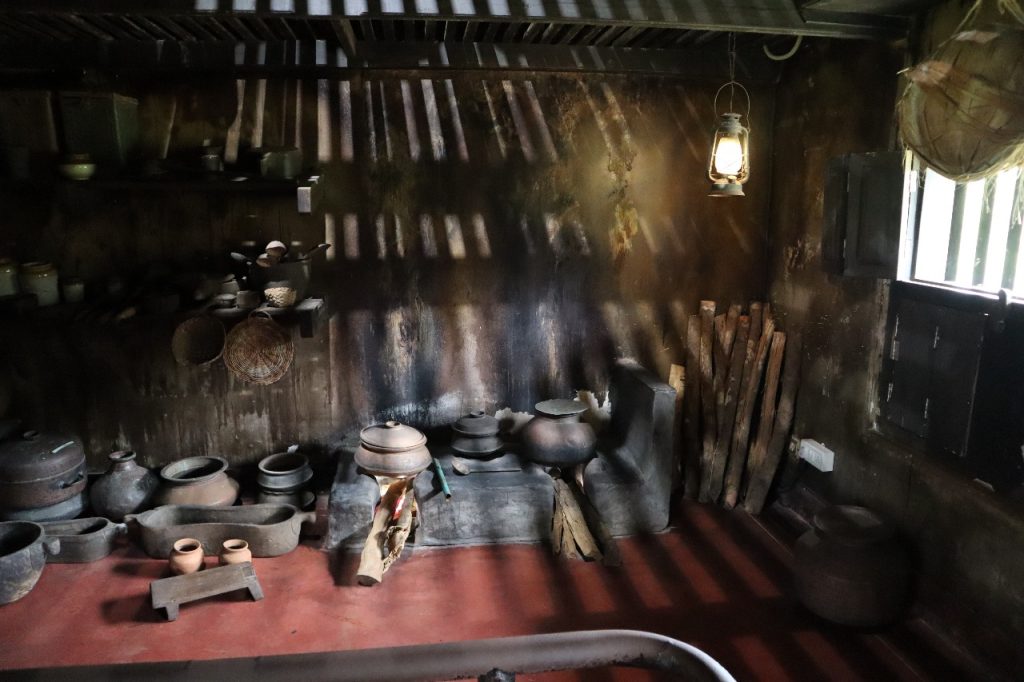
Immersive Visitor Experiences at Guthu House
A Hands-On Journey into Coastal Karnataka’s Traditions
One of the highlights of visiting Guthu House is the opportunity to engage in immersive experiences that bring the region’s traditions to life. The house offers guided tours, cultural demonstrations, and interactive workshops that allow visitors to explore Tulu customs and traditions firsthand.
From learning about the festivals and rituals celebrated in the region to participating in traditional craft-making workshops, these activities provide an enriching and educational experience for all ages. Visitors can also witness live performances of folk arts and dances, offering a true glimpse into the vibrant cultural scene of coastal Karnataka.
The Enduring Legacy of Guthu House in Coastal Karnataka
A Beacon of Cultural Preservation
Guthu House stands as a beacon of cultural preservation in coastal Karnataka, playing a vital role in ensuring that the traditions of the Tulu-speaking community are passed down to future generations. Its educational initiatives and preservation efforts make it an important institution for safeguarding the region’s unique cultural identity.
By visiting Guthu House, travelers not only immerse themselves in the rich history of the region but also contribute to the ongoing efforts to preserve and promote Karnataka’s diverse cultural heritage. Through its artifacts, architecture, and cultural experiences, Guthu House remains a vital link to the past, ensuring that the legacy of coastal Karnataka’s heritage endures.
Artifacts and Cultural Exhibits at Guthu House
A Treasure Trove of History and Artistry
Inside Guthu House, visitors will find a treasure trove of artifacts that represent the artistic prowess and historical significance of coastal Karnataka. These exhibits include intricate wood carvings, ceremonial vessels, and religious relics, each offering a glimpse into the community’s rich heritage.
Among the most remarkable exhibits are the hand-carved doors and pillars, which reflect the extraordinary skill of the region’s artisans. These items are more than just historical objects; they are living pieces of cultural heritage that continue to inspire new generations of artists and craftsmen.
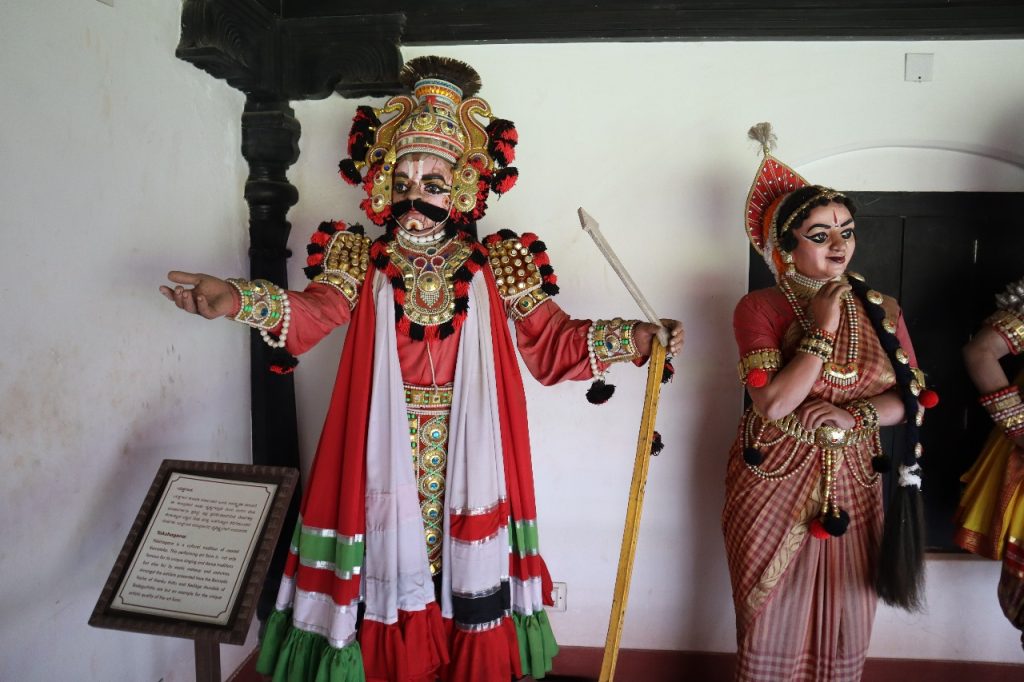
Traditional Customs and Rituals of the Tulu-Speaking Community
Celebrating Festivals and Traditions
The Tulu-speaking community’s traditions are deeply intertwined with their spiritual beliefs and connection to nature. From agricultural rituals to seasonal festivals, these customs are still celebrated today, and many of them are showcased at Guthu House.
One of the most popular traditions visitors can witness is Bhoota Kola, a unique form of spirit worship that is performed with elaborate costumes, music, and dance. Participating in or observing these traditional practices offers visitors a profound insight into the values and spiritual beliefs that have shaped the community for centuries.
Conclusion: Embrace the Timeless Charm of Guthu House
As we wrap up our exploration of Guthu House and its place in Pilikula Heritage Village, it is clear that this cultural gem is invaluable in preserving the rich heritage of coastal Karnataka. For those seeking to immerse themselves in the traditions, architecture, and cultural practices of the Tulu-speaking community, a visit to Guthu House is a must.
This timeless structure not only offers a glimpse into the past but also invites visitors to participate in the ongoing celebration of Karnataka’s diverse cultural legacy. Whether you are an architecture enthusiast, a history buff, or a curious traveler, Guthu House provides a truly unique experience that connects the past, present, and future of coastal Karnataka’s cultural heritage.
FAQs About Guthu House and Pilikula Heritage Village
1. What is Guthu House, and why is it important?
Guthu House is a traditional home in Pilikula Heritage Village that showcases the lifestyle and architecture of the Tulu-speaking community of coastal Karnataka. It plays a crucial role in preserving the cultural heritage of the region by displaying artifacts, traditions, and customs.
2. What can I expect to see at Guthu House?
Visitors to Guthu House can explore traditional household items, ancient artifacts, intricate woodwork, and exhibits showcasing the vibrant cultural heritage of the Tulu-speaking community. You can also participate in guided tours and cultural workshops. To know more about the things you can see about the Guthu House, click here to reach out to us.
3. Why is Pilikula Heritage Village significant?
Pilikula Heritage Village is a cultural and ecological park that preserves and promotes the heritage of coastal Karnataka. It includes Guthu House, along with other attractions like an artisan village, zoo, botanical garden, and water park.
4. Can visitors participate in any activities at Guthu House?
Yes, visitors can join guided tours, cultural demonstrations, and workshops that offer hands-on experiences related to the customs and traditions of the Tulu-speaking community. For more details, please visit : https://karnatakatourism.org/tour-item/pilikula-village-nisargadham/
5. How is Guthu House helping to preserve the heritage of coastal Karnataka?
Guthu House plays a key role in preserving the cultural heritage of the region by showcasing traditional artifacts, architectural styles, and cultural practices. It educates visitors on the importance of maintaining these customs for future generations.
6. What is the best time to visit Pilikula Heritage Village and Guthu House?
The best time to visit Pilikula Heritage Village, including Guthu House, is during the cooler months from November to February. However, it is open year-round for visitors. To know more about the best time, click here to Contact Us
7. What is unique about the Tulu-speaking community?
The Tulu-speaking community has a rich cultural heritage with distinct traditions, language, and architecture. Their customs, festivals, and agricultural practices reflect their deep-rooted connection to coastal Karnataka.

